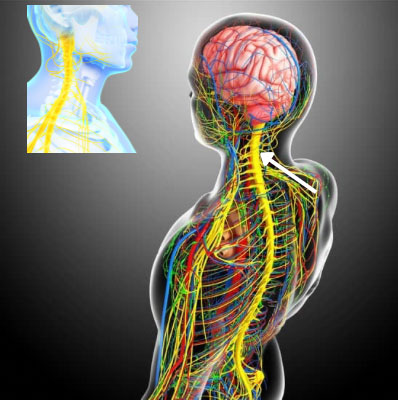Ailments and Procedures >> Peripheral Nerves
- Sympathetic Nerve Block
- Sphenopalatine and Occipital Nerve Block
Sympathetic Nerves are a network of nerves that extend the length of the spine and control some of the crucial involuntary functions of the body such as the opening and narrowing of blood vessels. Sympathetic Nerve Blocks work directly on this network of nerves.
With a standard nerve block, a local anesthetic is injected around a nerve, preventing pain messages traveling along that nerve pathway from reaching the brain. Standard never blocks are typically used to relieve pain for a short period of time, such as during a surgery. A Sympathetic Nerve Block is performed to determine if there is damage to the sympathetic nerve chain and whether it is the source of pain. This is a diagnostic test primarily, but it may provide relief far in excess of the duration of the anesthetic.

The procedure starts with a local skin anesthetic given in the lumbar area of the back. A needle is then inserted into the back under fluoroscopic vision next to the vertebral body. An anesthetic medication is then injected into the area. If necessary, the block may be performed on both sides of the spine.
It takes thirty minutes for the procedure followed by evaluation and recovery for several hours.
For more information, please visit our office or call us at (702) 476-9600.


